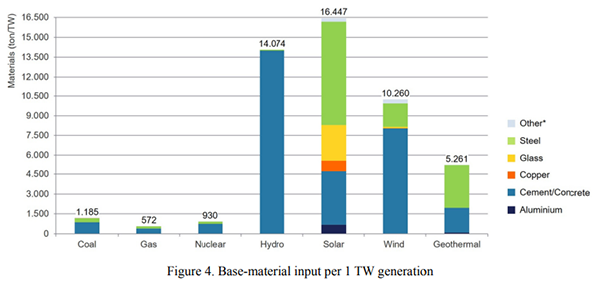In our February edition we published a right of reply from Fossil Free SA taking issue with Nick de Blocq’s front page article in the November edition “Chasing the pipedream?”
The topic has certainly ruffled feathers on both sides of the divide and the arguments both for and against gas versus renewables needs to be aired for the benefit of our society and beyond. Ed.
A response to the FFSA article appears below from Mr de Blocq
I appreciate the response from Fossil Free SA to my article in the November issue of CBN. It gives me an opportunity to clarify and explain our stance. Firstly, let me correct some erroneous or misleading statements made by FFSA: In paragraph two they make a presumption that we are exporting “outdated technology” to SA because Australians are done with traditional energy generation. If you had done your homework, my friends, you would know that the SA assets are the only interests that Kinetiko has. We have not operated in Australia and everything we do is towards greening the energy landscape of this country. Australia still depends on 70% of its energy coming from fossil fuels – they are far from done with it!
Paragraph 8: If South Africa manages to get 20 GW of RE installed in the next 5 years, I will personally buy the champagne! Only about 4-7 GW of that will actually be usable though, but very welcome indeed to the mix we need, if we can do it. I’ll hold the money for the bubbly, but not my breath….
Paragraph 10: The SA Media, indeed global media, are actually very biased against fossil fuels, not the other way around. Very few of them are willing to report the inconvenient truths that I am happy to share in this or other fora.
Paragraph 12: The $8.5 billion referred to is not a local package to be approved by the SA Government; it represents an offer from foreign powers to assist us to move forward with our decarbonisation efforts. As we also play in that space, we would welcome the injection, if it ever comes; but let us not be deluded by this. Only about 4% of that lofty total represents grants – the rest has payback implications. It is less about “yes or no”; it is a function of affordability for the tax payer and finding a way for it to not creep into the wrong hands!
When discussing nuclear energy, the FFSA correctly points out that 26 of France’s 56 plants were shut down at the end of last year. The reason is not dissimilar to our own supply issues – lack of investment in maintenance and new plants as demands increased. There was a lot of revenue from supplying Germany when they short-sightedly shut down their own nuclear plants. France now lacks qualified workmen who have moved on to other pastures and they have created specialised training centres for artisans like welders to keep up with the maintenance and repairs. Emmanuel Macron is also pushing for ten new nuclear power stations to be built at a cost of nearly $10 billion a pop. One can’t blame the generating solution for unwanted manmade problems, but one has to acknowledge that France sees a great future in nuclear!
FFSA needs to be careful that they do not paint the entire industry with the same tar brush. We need to distinguish carefully between what we do in the gas industry versus the rest of the fossil fuel game. I have no doubt that we all share the same concern about the environment and the climate, and with my environmentalist’s hat on, I am aligned with their sentiments. For a little more clarity, though, let us look briefly at what has gone before so we can better understand the intent in the South African context. Looking at the last 15+ years in the USA, according to the World Economic Forum, their move from coal to gas has resulted in a saving of over 500 million tons of CO2. This is a direct result of increasing the use of gas, which has more than doubled in that time period, while dropping coal usage from 50% to about 20% of electricity generation today. Wouldn’t it be wonderful to replicate those stats in SA?
The article by Smetherham and Le Page is well-written and well-intended, however, there are some headline issues and some more micro-level concerns, all of which either skew the argument or lack pragmatism. I do not want to confuse a non-technical readership with the minutia, but rather focus on some larger issues which have been raised.
Major points:
- Electricity comprises of only about 25% of global energy applications, and their promotion of sun and wind can only look at part solutions in that sphere. The anti-petroleum lobby has been careful to not promote this truth, with benefit being derived from confusing people between electricity and energy. What they have not mentioned is that petroleum products are responsible for a myriad of modern applications, including: Chemicals, medicines, plastics, fertilisers, clothing, vehicles, planes, trains, bicycles, fuels, mining, food production, packaging, kitchen appliances, lubricants, paints, insulation, paper/textile/leather/machinery manufacturing, cement, TVs, computers, cellphones, to name but a few.
- There is no “clean and green” energy solution today, and wind and sun should not be marketed as such. The “so-called” renewable solutions are miss-named. There is nothing renewable about the mined ores that are required to produce the materials used to make wind turbines and solar panels. The mining, processing, manufacturing, transportation, construction and operation required for both towers and panels are all inordinately high-carbon processes and there are places where wind turbines almost do not even reach carbon neutrality before they lose efficiency and are decommissioned and placed into ever-growing landfills where a lot of components cannot decompose in many lifetimes, if at all. Apart from getting to the finished product in the field, the next time you look a wind turbine ask yourself what it is painted with, what lubricates the moving parts, what insulates the miles of wiring, what it is set in as a foundation? Both wind turbines and solar panels are absolutely petroleum products and these much-beloved, albeit least efficient, solutions could not be possible today without fossil fuels. I maintain that the greenest solution we have on planet earth today is hydro and nuclear, not RE. Germany is seriously regretting its decommissioning of so many nuclear plants (where after they had to hypocritically import nuclear power from France) and are now forced to do things like rip up wind farms to get at lignite to power recommissioned coal-fired stations. They have even regressed to burning biomass in Europe, all due to what? The sudden lack of a wonderful, much cleaner product called “gas”. If ever there was a time for gas, it is now; even if you prefer to consider it a bridging solution while we get better at bulk supply from other sources. Or we could continue to burn coal…. not the best option for either mankind or mother earth in my opinion!
- While methane is indeed a nasty and unwanted greenhouse gas, the assertions that this is a product of “the production, processing, storage, transmission and distribution of fossil gas” is misleading. Methane emissions are a function of leakage, not process, and responsible engineering has come a long way towards identifying and minimising or negating this issue. What my friends at FFSA skilfully do not educate the public on is the issue of nitrogen trifluoride. NF3 is a product of the manufacturing of solar panels, and it is highly toxic to all life on earth. To quote Wikipedia: “NF3 is a toxic greenhouse gas, with a global warming potential (GWP) 17,200 times greater than that of CO2.” One cannot point a finger at inadvertent, but traceable and controllable, release of methane (which is an unstable molecule and DOES decompose in the atmosphere) without mentioning that NF3 is an intentional (production-functional) uncontrolled release to atmosphere, that it is a very stable molecule that can never decompose in the atmosphere, that it has a GWP 215 times higher than methane and has quadrupled in atmospheric volume every decade since the late 1900s. Fair is fair!
- Energy efficiency. I hope that FFSA will not try and refute the fact that globally, sun and wind have provided us with an average of not more than 20% of their installed (nameplate) capacity. Here in SA we have done better – we can reach about 30%. Last month (Dec 22) there was a week when the entire wind-based, built capacity of the UK was dribbling along at no more than 1% output. This is not an efficient, grid-level solution, whereas gas provides a steady output, 24/7 and can support both baseload and peak demand as a pragmatic replacement for coal. The real solution for wind and sun lies in the ability to store and distribute power at will. As an off-grid (eg: home-based) solution, I would recommend anyone who can afford it to put panels on their roof and batteries in their garage and get off the grid and avoid loadshedding. As a multi-national, industrial level solution, we are not even close to RE being the saviour it claims to be! Much is made of batteries – but have a look at how RE is going to have to compete with EV (electric vehicles) for batteries and how unstable they have proven to be. Their components also, by the way, have to be mined from depleting sources and comprise of much rare-earth and related minerals, all of which are on a depletion curve. 70% of the cobalt required for batteries comes from the DRC where child-based, slave labour is the abhorrent practice. The Hornsdale Power Reserve was mentioned in the FFSA response. What they did not mention in that regard was that the scheme originally had 100MW – 30MW running for 3 hours and 70MW for all of ten minutes! As a percentage of global requirements, this example is in any case miniscule and inappropriate. We are going to need something better than lithium, cobalt and nickel to store energy in support of RE. It is no more than recycled power with associated efficiency losses. I will be watching the second hand EV market with great interest, when level 2 buyers realise that it will cost the same as a new car just to replace the batteries in an old model! And where do the used batteries go? Back into toxic landfills.If you recall nothing more from this article, remember this: To get the same amount of energy from sun and wind as we do today from fossil fuels, we will need to increase our mining effort by over 1 000%. A hundred more mines for every one we have today. Not speculation, simple physics. This will be needed to satisfy the demand from the pro-RE-only forum for copper, iron ore, silicon, nickel, graphite, chromium, zinc, lithium, cobalt, neodymium and other rare earth minerals. That scale of mining is simply never going to happen – not with the bans on the proliferation of mining, and not with the paucity of expertise and increasingly hard-to-find resources. Couple these bans to the disastrous disinvestment in oil and gas exploration and production and we head blindly (for some) into an era of mankind’s history of catastrophic energy poverty! 84% of global energy is FF based and over 90% of transportation depends on FF. The transition must come, but it can only be at a pace that sustains the 5Ps (see JET below) and will differ from region to region due to differing stages of development. The overnight change being demanded by FF antagonists will lead to nothing but chaos!
- A very brief mention was made of Just Energy Transition (JET) in the FFSA article but I have not yet seen any research showing that RE can support this approach. The RE promoters seem to be creating an alternative reality to the lived experience by focusing solely on the environment and the creation of inefficient electricity without social conscience or consideration of the other 75% of energy consumption. They do quote the UN though, and so do I: The 17 Sustainable Development Goals (agreed to within the UN) contain what is called the 5Ps: “Planet, People, Prosperity, Peace and Partnership”. One cannot focus purely on Planet while ignoring the rest. They all require equal weighting in our energy policies and gas can deliver.
- Cost and commercial: Much was made of the cost of electricity by my FFSA friends. They are referring to the sales price of RE and ignoring the FCOE (Full Cost Of Electricity) I quote from Journal of Management and Sustainability; Vol. 12, No. 1; 2022 ISSN 1925-4725 E-ISSN 1925-4733 which explains FCOE as including Cost of Building, Fuel, Operating, Transport, Balancing, Storage, Backup, Emissions, Footprint and other metrics like Material Input per Unit of Service (MIPS), Lifetime, and Energy Return on Investment (eROI). If one takes all of the above into account, RE fails miserably versus gas. Here is a MIPS example from this journal:
 Gas wins this one hands down by a factor of nearly 30 times versus solar! This research concludes that the highest FCOE is wind/solar/biomass, followed by nuclear, then hydro and least cost is coal/gas. The eROI, as expected, is the inverse, with sun and wind being worst and coal and gas the best return on investment.Taking a South African context iro cost to the taxpayer just to build solar farms, a recent REIPPP BW5 signing statement from the DMRE showed that they were prepared to pay R12 billion for 1.7 GW of RE nameplate capacity. That means about 500 MW in real output terms or somewhere around R25 million per MW. Wow! Now look at the space it is going to take. If you consider trackers, inverters, access roads and boundary fencing, your density reduces to under 60W per m2. So, this singular example will require almost 17,000 m2 of land area per MW. Or nearly 30 square kilometers for the project. Compare that to three holes in the ground a few inches wide to produce a MW from gas…..ok, plus a container for the generator. Good luck talking to those farmers about how much land area we need to remove from agriculture to make way for the most unreliable and inconsistent power source the planet has ever seen! I predict a tough sell….whereas gas and agriculture can and does coexist happily, such is the efficiency of gas versus solar.
Gas wins this one hands down by a factor of nearly 30 times versus solar! This research concludes that the highest FCOE is wind/solar/biomass, followed by nuclear, then hydro and least cost is coal/gas. The eROI, as expected, is the inverse, with sun and wind being worst and coal and gas the best return on investment.Taking a South African context iro cost to the taxpayer just to build solar farms, a recent REIPPP BW5 signing statement from the DMRE showed that they were prepared to pay R12 billion for 1.7 GW of RE nameplate capacity. That means about 500 MW in real output terms or somewhere around R25 million per MW. Wow! Now look at the space it is going to take. If you consider trackers, inverters, access roads and boundary fencing, your density reduces to under 60W per m2. So, this singular example will require almost 17,000 m2 of land area per MW. Or nearly 30 square kilometers for the project. Compare that to three holes in the ground a few inches wide to produce a MW from gas…..ok, plus a container for the generator. Good luck talking to those farmers about how much land area we need to remove from agriculture to make way for the most unreliable and inconsistent power source the planet has ever seen! I predict a tough sell….whereas gas and agriculture can and does coexist happily, such is the efficiency of gas versus solar.
Two decades and nearly US$4 trillion of RE investment has moved the traditional energy sources by a single percentage point – from 85% to 84% of global energy supply. And this is against a background of massive subsidies in support of RE and active disinvestment in oil and gas. What has it brought us? Energy poverty on an unprecedented global scale!
Now let’s look at the supply issues facing wind and solar. Since a peak in 2021, declining supply chain capacities have necessitated a new look at the future of RE globally. Turbine manufacturers are cutting jobs in significant numbers (eg: GE Renewables, Siemens Gamesa) due to cost increases in an already stretched industry. New cap forecasts for 2023 have been downgraded to show no growth in the industry. Shares in turbine makers Vestas and Nordex, and developer Orsted have all declined since 2021. Vestas reported a mid-2022 loss of €182m and Siemens recorded its first quarterly loss in 12 years. Wind auctions are returning very disappointing (sometimes zero) responses worldwide right now. So what is going on? Is the world starting to realise that we can still get cleaner, particulate-free power and other products from a source that can provide weather-proof output all day and night, for hundreds of years, in cloudy and windless conditions? You decide.
- Andre de Ruyter has also been quoted in the FFSA article. We feel the same disgust at the appalling attempt on his life and the fact that he was called “treacherous” and “traitorous” for introducing thinking that moves Eskom away from coal, even slightly. This is an issue on which we stand firmly united with FFSA – coal, diesel and heavy fuel oils are the dirtiest forms of energy creation, and we absolutely need to look at alterative bulk energy generation. It is, however, unrealistic in the South African context, to expect this to happen anytime soon and move coal out of the 80 percentiles which it currently enjoys – there are simply too many political and commercial implications. What ADR did say, was that Eskom is going to repurpose certain plants to run on, or be co-fired by, gas. This is a clear step in the right direction, as the use of gas for power better than halves the CO2 output (which is a very ineffective greenhouse gas in any case, and something absolutely necessary for plant life) but more importantly negates the particulate output of the other fossil fuel options; nitrogen sulphide, sulphur dioxide, soot, ash, etc. Gas IS the cleaner option by comparison and if by some magic-wand-waving miracle we could move entirely from coal to gas overnight, we would over-subscribe our COP obligations and become the “blue-eyed wonder” of world-wide CO2 reduction modelling. To use the previous example, the USA has had a GDP growth of 32% over the last decade and a concurrent reduction of GHG output of 28%. This is result of moving from coal to gas in so many instances of power plant conversion. Therefore, logic dictates that any move in that direction has to be essentially good!
My conclusions:
- Anything that can produce electrons has to be welcome.
- A healthy energy mix is the inevitably required solution for power, not only in SA but globally.
- Fix Energy Poverty first! Energise our homes and industries and provide the development that brings jobs. This is the only foundational baseline from which we can responsibly transition away from traditional energy sources, whilst maintaining output under the right metrics.
- Less coal, more gas, while we find a better, cleaner, more consistent, best FCOE source of electrical power on a global scale for the next few thousand years.
- One cannot ignore the other 75% of energy requirements not covered by electricity. There are no alternatives yet other than petroleum. But, yes, we can be far more intelligent about how we use this fantastic product! We need to be able to leave some for future generations to work with. Following the demand from petroleum antagonists, evolving every internal combustion engine to EVs and moving 100% of our global electrical generation to weather dependent sources with storage will not only deplete the minerals required before even getting close to closure but ensure that future generations have nothing but mountains of toxic waste and no more raw lithium, copper, cobalt, etc. for their requirements.
As this is a newspaper article and not a research report, I will hold my bibliographical sources and share independently with any interested party.
Nick de Blocq, CEO Kinetiko Energy.















